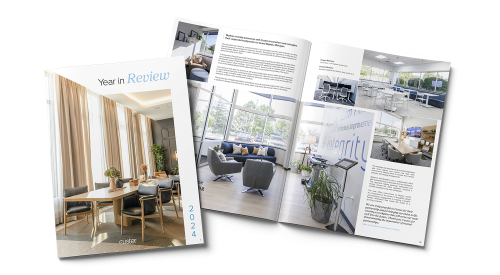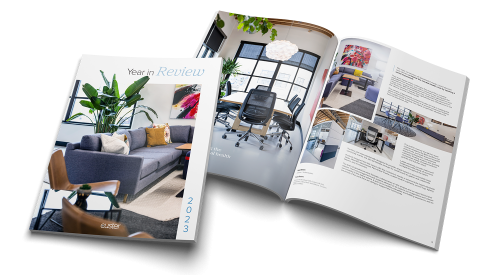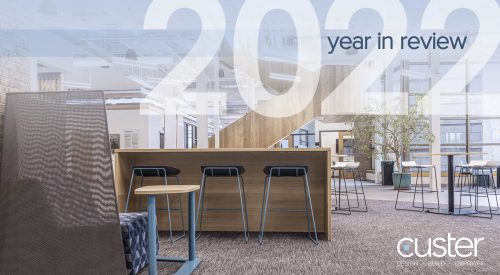- Blog
- 3 Ways Healthcare Design is Improving Patient & Staff Wellbeing
3 Ways Healthcare Design is Improving Patient & Staff Wellbeing
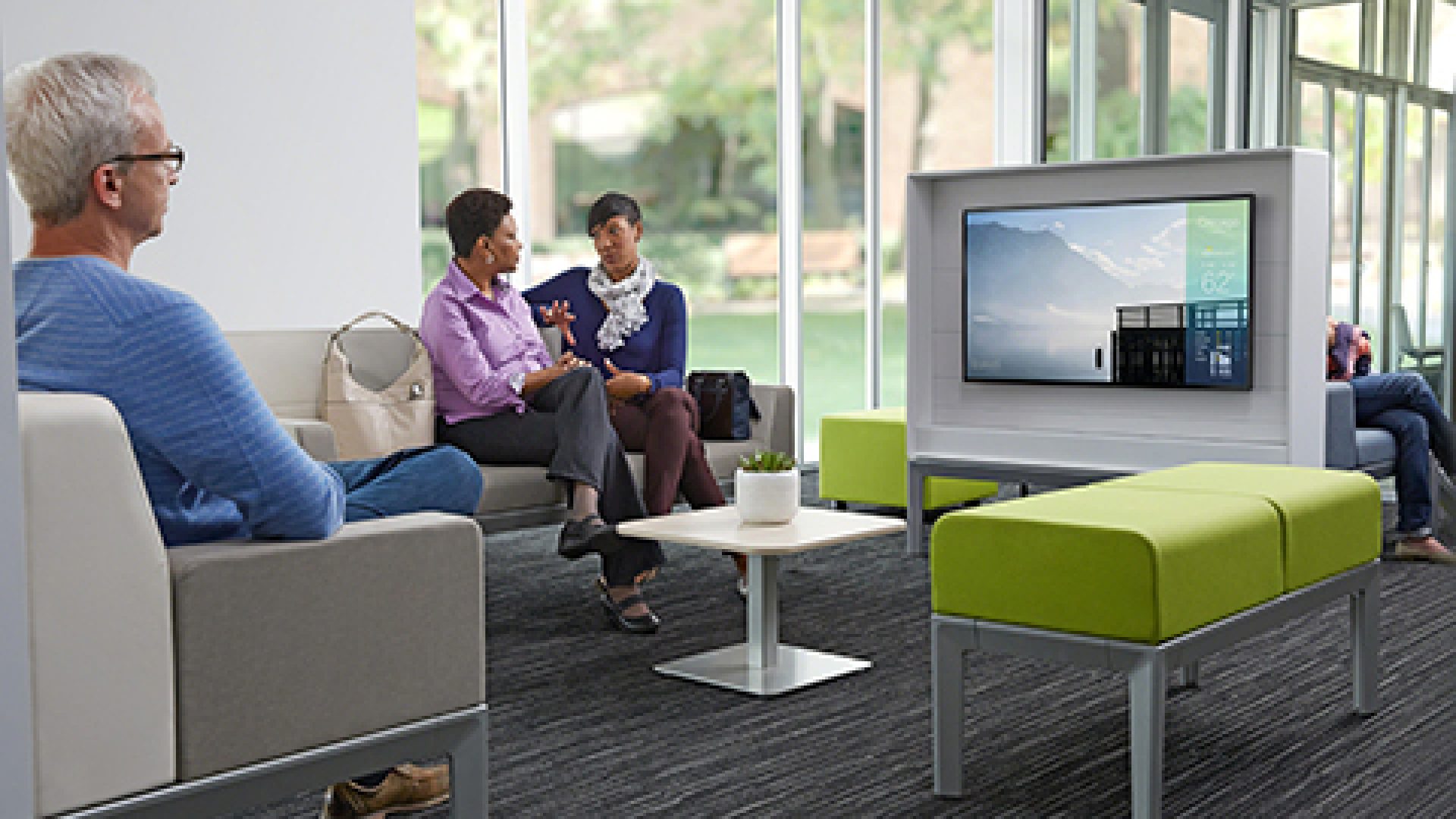
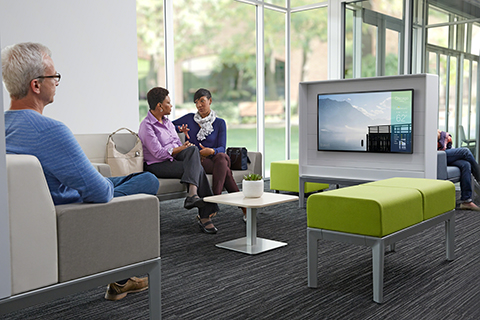
While we may expect healthcare to change, oftentimes it’s with a great level of anxiety. Billing, insurance, and services can all fluctuate, leaving us uncertain about the care we will receive. What we may not anticipate are changes to healthcare that improve our experience, increase our satisfaction, and take our feedback into account. Yet those improvements are exactly what was discussed at this year’s Healthcare Design Conference and Expo. Hosting architects, designers, nurses, researchers, educators and more, the annual conference casts a hopeful tone on the future of healthcare design and wellbeing. After returning from the conference, our healthcare team shares the latest in industry trends and insights, each of which can improve the healthcare experience for all. Read on to see how these trends may affect you, your family, and your healthcare journey.
Supporting Behavioral Health Throughout the Healthcare Journey
Jen Werner, Healthcare Specialist: Behavioral health was a hot topic at this year’s conference. Healthcare staff are seeing a physical and behavioral health crossover, which is in turn compelling healthcare design to respond. Research has determined four principles for behavioral health design: space for staff to retreat (to avoid attrition), safety, security, and privacy. Solving for these issues creates an environment of support and care for behavioral health patients and staff alike.
One place where this crossover is happening is the emergency room. More and more often, behavioral health patients in crisis are going to the emergency room for care. But emergency departments weren’t created to support behavioral health needs, so spaces are being set aside for emergency behavioral health treatment. These spaces are consciously designed for patient wellbeing, with both open areas and long-term waiting support, but also feature zones where staff can retreat if necessary. They are also, of course, designed for the safety and security of patients and staff. Natural and organic materials are also being utilized to increase patient comfort and a sense of calm.
Amanda Price, Interior Designer: There is a direct correlation between healing and exposure to nature. Views to outdoors, or access to a garden, positively enhances patient and family experiences, from a physical, emotional, and mental perspective. Overall, human centered design is a foundational component in a successful health environment. A more residential aesthetic in both patient rooms and waiting rooms brings a sense of comfort and promotes resiliency and empathy. This is accomplished through surface materials, furniture choice, access to power, and other design details such as lighting and art.
Giving Patients Choice & Control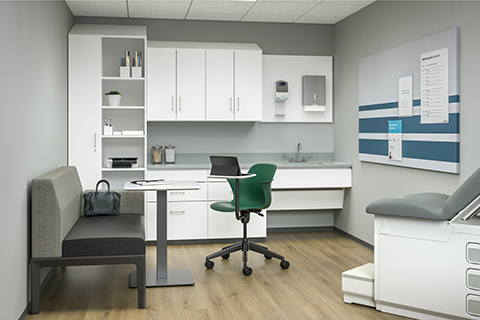
Megan Kuzma, Healthcare Team Leader: Giving patients choice and control during their stays is being implemented in various settings. One simple way to implement this principle is to allow patients to adjust the lighting and temperature of their rooms. In other areas of the hospital, such as the NICU and birthing centers, generational shifts have inspired more choice and control for patients and families. For example, in the past, a nurse may have taken a newborn baby out of the birthing room to be bathed and have the baby’s vitals tested. Now, some birthing centers have baths in the birthing rooms, allowing parents to bathe their newborns themselves without leaving the room.
Jen: The same is true in waiting areas. Research has found that, essentially, people are going to do weird things if they’re uncomfortable. They may lay down in spaces that aren’t designed for lying, they may sit on the floor near an outlet if it’s the only access to power, and so on. Waiting rooms are increasingly being designed to allow for a range of seating choices, with access to power throughout so patients and families can have better control of their environment, even while waiting.
Amanda: Patient feedback and administration buy-in are both key to effective healthcare design. If an administration is not on board with a change in culture, then a new design will not be as effective. This is where the intersection of designers and health professionals can create great outcomes, which ultimately serves others and a greater good.
Patient Satisfaction
Megan: Patient satisfaction is affected by design. Ensuring that healthcare design supports the highest levels of satisfaction, patients and families are being brought into the design conversation at healthcare facilities. Being proactive with feedback allows healthcare staff and facilities to better serve patients during their stays.
Feedback is also generated by surveys sent to patients after their hospital stays. But not all patients have access to those surveys, especially if they’re issued digitally. Healthcare facilities are now creating accessibility for patients by distributing surveys via iPad before discharge, ensuring that every patient has the ability to speak.
Interested in hearing more about the future of healthcare design? Connect with us here.
